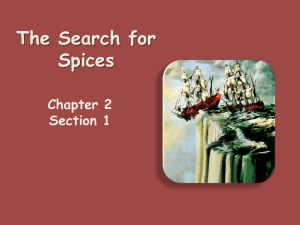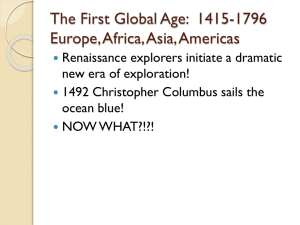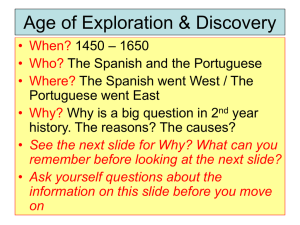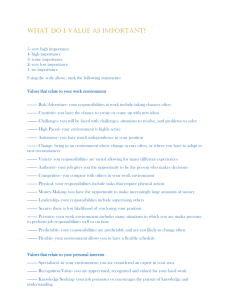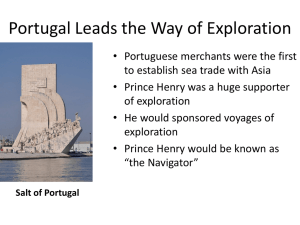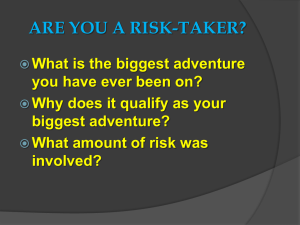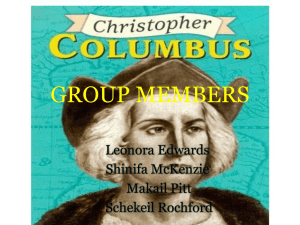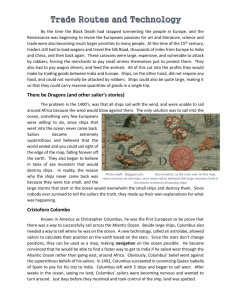Age Of Exploration 1400 CE
advertisement
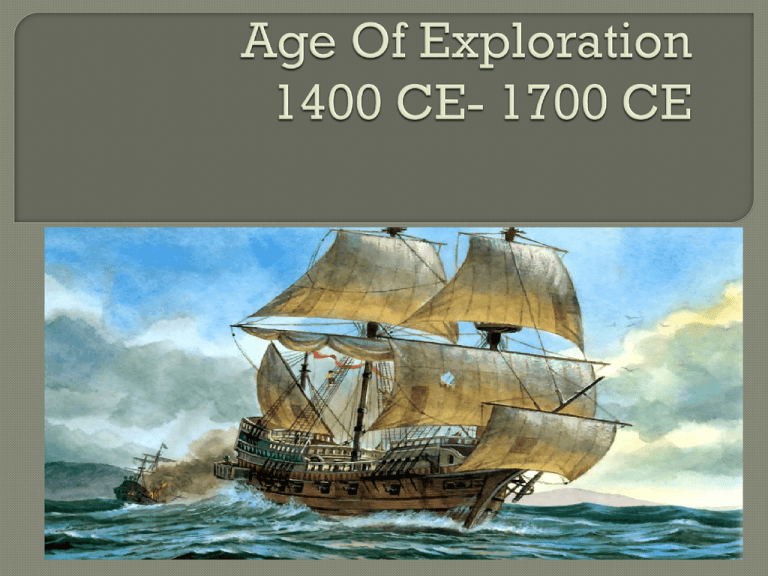
In 1400 most Muslim and Italian merchants controlled trade between Asia and Europe Europeans wanted to cut the Muslim and Italian middlemen because the price of the goods increased from trader to trader. The Atlantic powers, first Portugal then Spain sought new route to Asia that by passed Mediterranean. Magnetic Compass Astrolabe Sextant Caravel Mercator Projection Description- Device used for determining direction. Importance- made it possible to find direction at sea. Not very accurate, iron in a ship caused false readings. Description- Device used to measure the angles of the sun and stars above the horizon. Difficult to use accurately in rough seas Importance- sea determine their latitude at Description- Device for determining the altitude of the sun or stars. Importance- improvement over astrolabe because the movements of the ship didn’t effect the readings at rough seas. By comparing this altitude at different degrees of latitude, navigator can find the latitude of the ship. Description- Map projection that shows latitude and longitude at straight lines. Importance- excellent map for navigators b/c it showed true directions of places in relation to each other Description- Ship developed by Portuguese that combined the square sails of European ships with triangular sails. Importance- made it easier to sail across or even wind. Also there were sturdier cannons. Also adopted the sternpost rudder and numerous masts of Chinese ships. • Country/date- Portugal 1415 • Significance- Prince Henry, son of Portuguese king, gathered experts in science, mapmaking, and shipbuilding. Started the idea of exploration after Portugal seizes African coast. • Henry wanted find the source of African gold . He wanted to form alliance with a mysterious but very rich Christian African ruler, Prester John who he heard tales of, to go against the Muslims. Country/date- Portugal 1488 Significance- Dias rounded the Cape of Good Hope at the southern tip of Africa. Became known as the Cape of Good Hope b/c it opened sea route to Asia. First European to sail around the southernmost tip of Africa. Country/ date -Portugal 1497 Significance- led four ships around the Cape of Good Hope. Lost many men but reached great spice port of Calicut on west coast of India. It took 10 months to reach India; the Portuguese lost half their ships. Many sailors died of scurvy, a disease caused by lack of vitamin C. The English began to include limes on board, which did not spoil quickly; this led to English sailors being called “limeys.” Although he lost half his ships, Da Gama returned with Asian spices. The Portuguese had now established a successful all-water trade route to Asia! country/date Spain 1492 Significance-Italian navigator who wanted to reach the indies by sailing across the Atlantic. Instead he made contact in the new World. In 1492, Columbus convinced Ferdinand and Isabella of Spain to finance he voyage to Indies. August 3, 1492 Columbus sailed west with three small ships the Pinta, the Nina, and the Santa Maria. Don’t write Columbus reached land on October 12, 1492; he hadn’t reached Asia, but the New World! DON’T WRITE Thinking he had successfully reached the East Indies, Columbus called the surprised inhabitants who greeted him, los indios. This term translates into “Indian,” a word applied to all native peoples of the Americas. A Global Exchange of plants and animals between the Americas and Europe. 1. By the 1700s, foods such as corn, potatoes and beans contributed to population growth worldwide. 1. 2. 3. Explorers continued trying to find a Northwest passage to India Europeans conquered most of South East Asia, India and the New World. The slave trade developed in the New World.
